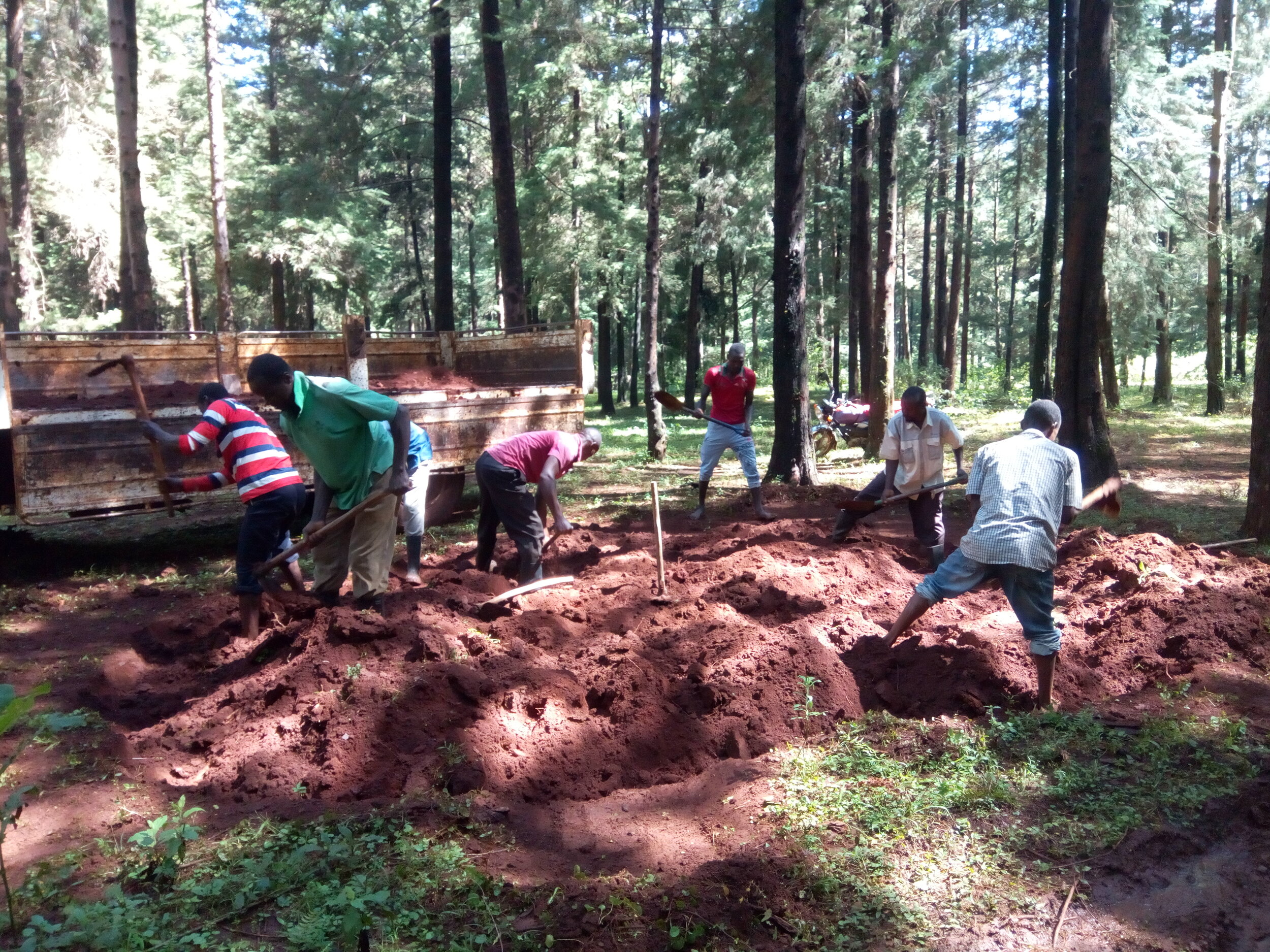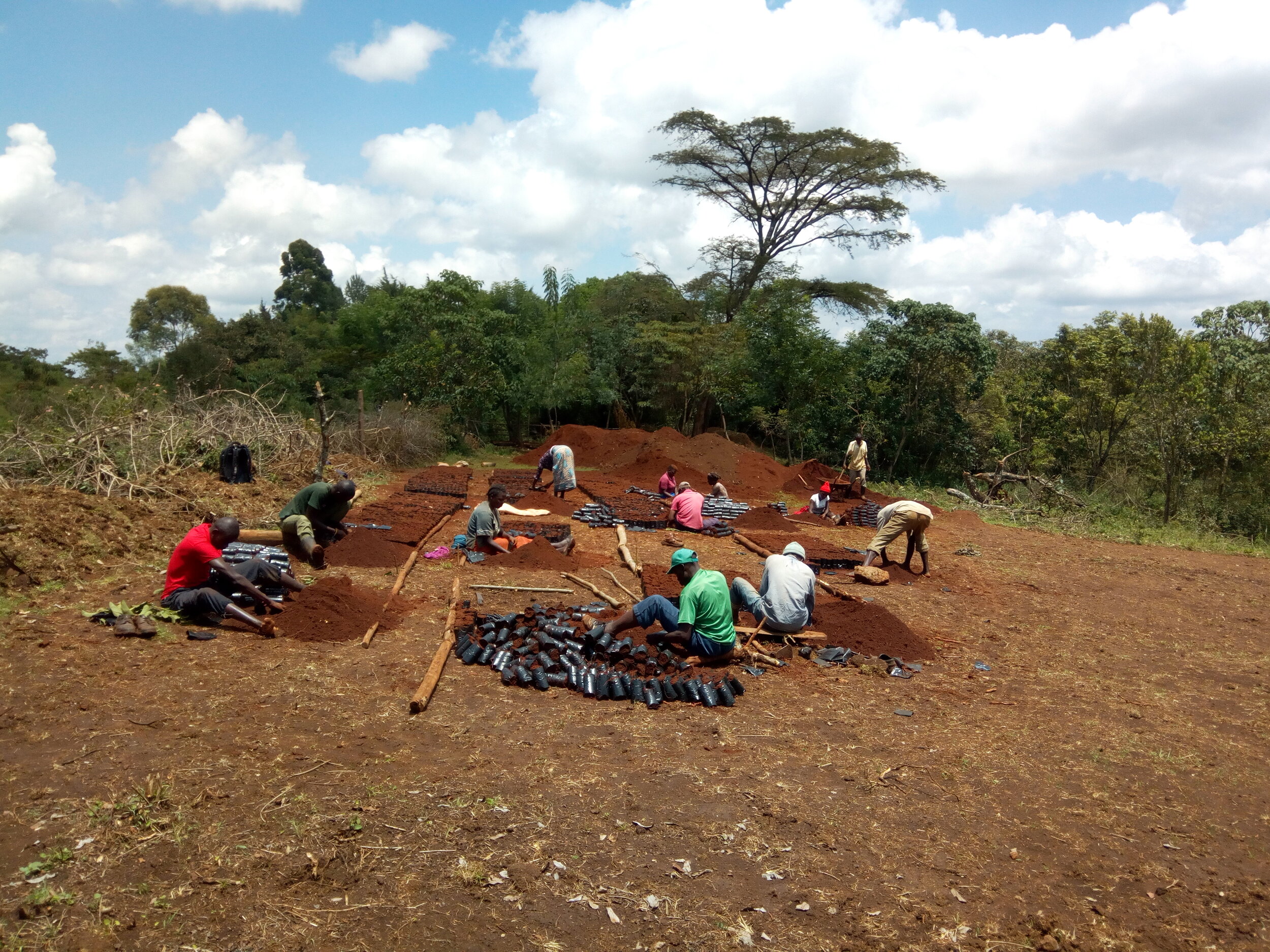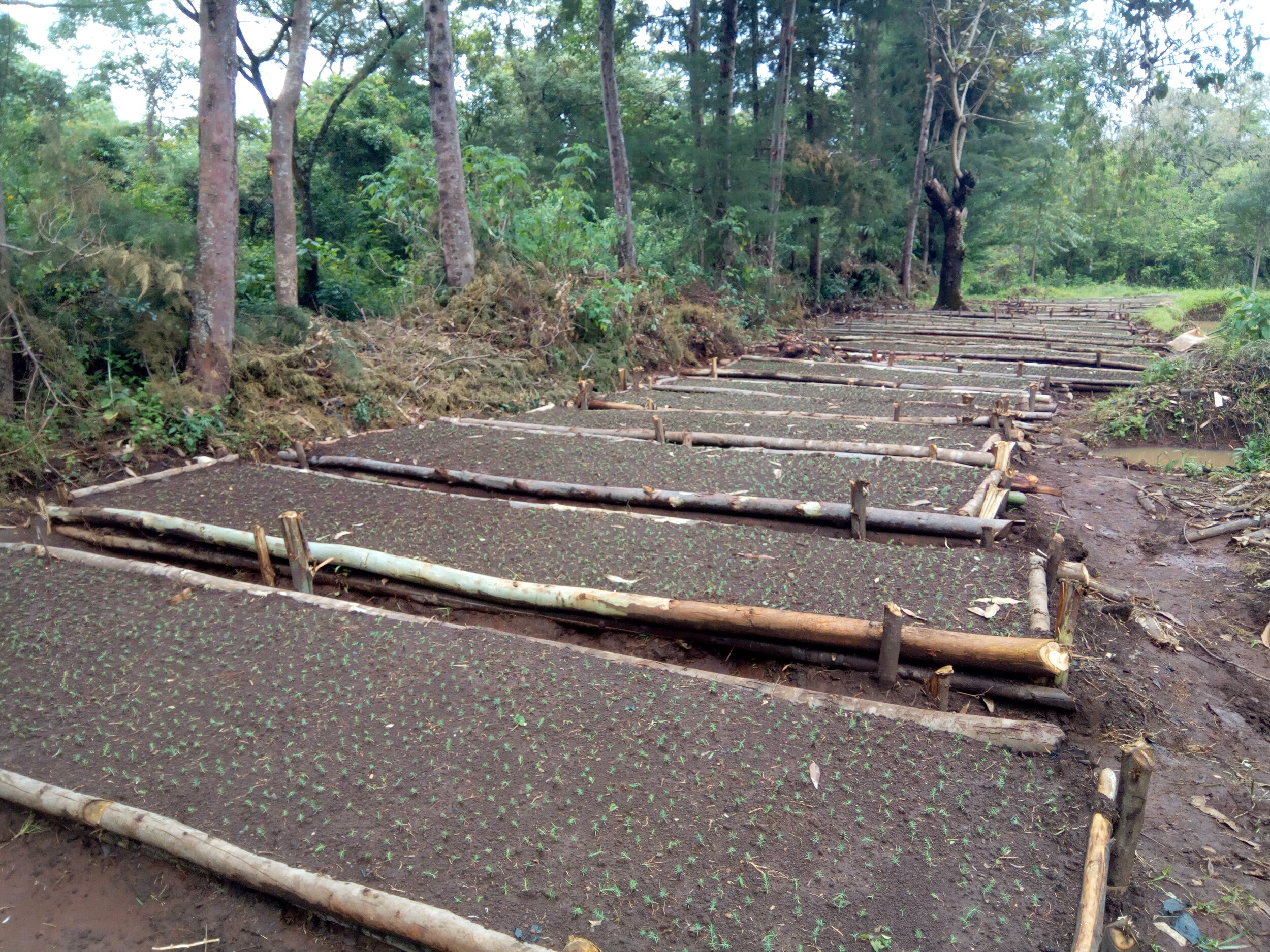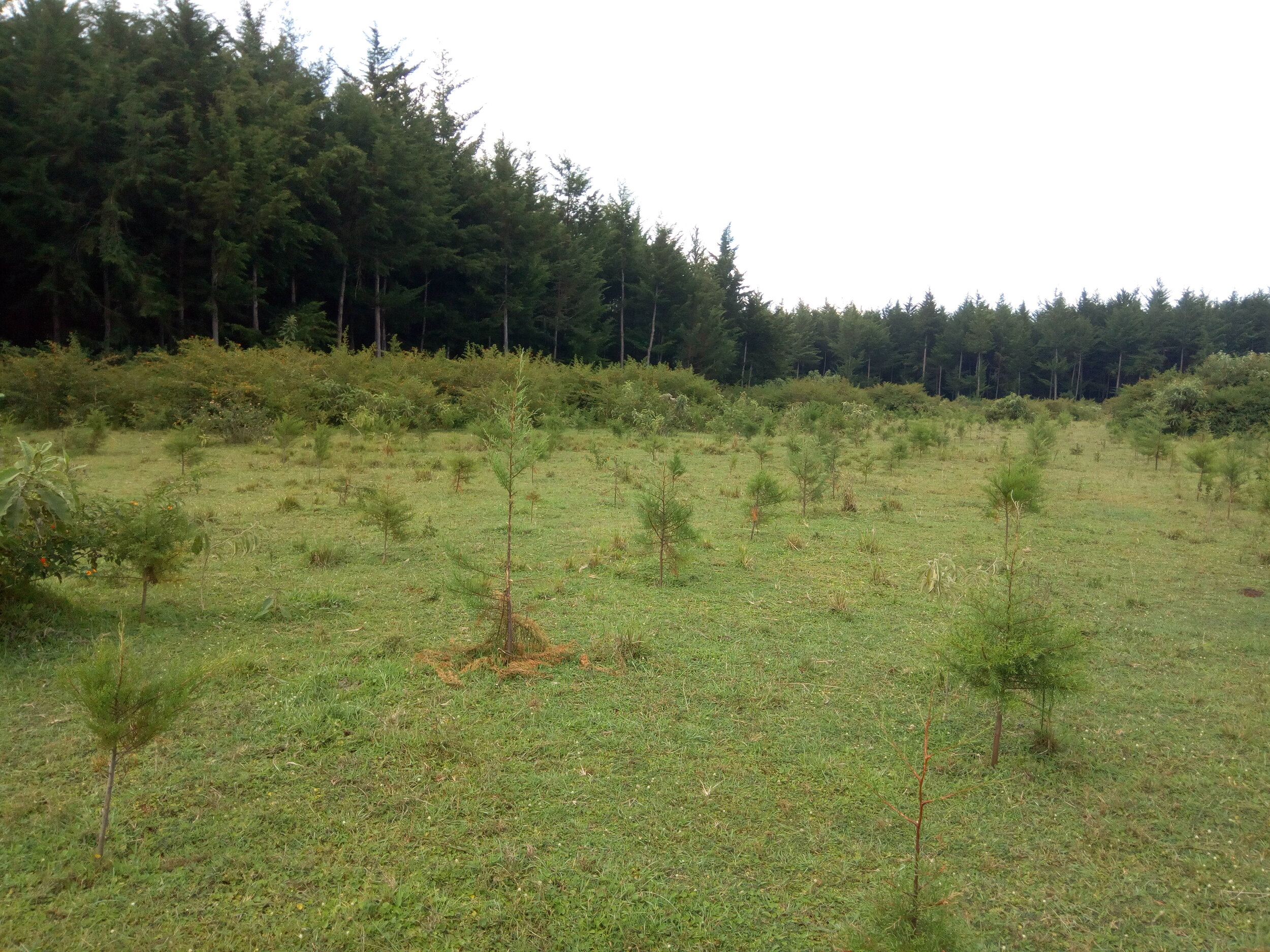Accelerating Kenya's 10% Forest Cover by 2022
by Kelvin Bidanya
Kenya’s forest cover stands at 7.2%; according to the Ministry of Environment and Forestry. This percentage is short of the 10% cover that is to be achieved by 2022. From Kenya Forestry Research Institute’s report, more tree planting/growing activities need to be enhanced to achieve this target. The institute goes further to suggest that around 2 billion tree seedlings need to be planted. In order to accelerate the achievement of this target, the President of Kenya through the Presidential Directive came up with various initiatives. The first step is the revitalization of tree nurseries. Both the government and the private sector will team up for this, with the latter contributing 10% of their CSR to tree growing. Secondly, is to indoctrinate the culture of tree planting and growing in communities. Kenya Forest Service is the main agency that is tasked with offering technical advice and support to tree nurseries. I have worked as an intern with Kenya Forest Service, Kakamega Ecosystem, Nzoia Forest Station. Nzoia forest is part of the entire Kakamega Ecosystem, which is known to be a habitat of a wide range of tree species as a remnant of Congo Rainforest.
Nzoia Forest, with a land area of 5310.2 ha, is well endowed with diverse forest resources mainly comprising of exotic tree species and natural forest. This forest is a vital water catchment area for River Nzoia.
Despite the years of its existence, the forest still has a backlog/unplanted area of 1058.8 HA. Together with the station manager, Mr Rickson Aluda, we came up with strategies to clear this backlog. These included;
Identification or mapping of priority areas for tree planting. The forest is divided into four compartments, with some unplanted dating back to 1982.
Liaising with the Community Forest Association leadership to help with the election of compartment leaders. Each compartment would elect two leaders, of both genders, that would oversee and advise on the implementation of forest initiatives. This was successful.
Expansion of the forest station tree nursery.
Clearance of the existing backlog through enrichment planting.
Capacity build and empower tree nursery start-ups in the station.
Incorporation of youth in forest management and conservation.
What followed were activities that would see the fruition of these plans. With the election of compartment representatives, we helped them to identify where to establish tree nursery sites. This was near water sources. We made it easy for user groups to register and establish their tree nurseries at no charges. All they needed to show was interest. Within the period of registration, a total of 15 tree nurseries had been established. We offered technical advice on the nursery practices that need to be followed for seedling survival. These tree nurseries were also supplied with polythene tubes for seedlings. Together with the station manager, we would closely monitor their progress in line with set targets.
On my reporting date, the tree nursery had only 183,798 seedlings. Through my one-year tenure, I spearheaded the raising of up to 214, 968 tree seedlings. The activities that I intensified included soil digging and collection, Swaziland bed preparation, seed sowing, pricking out, watering, gaping, root pruning, weeding, and pesticide spraying.
Forests in Kenya are managed jointly by government and communities through Community Forest Associations. Each forest has its CFA leadership elected by the community members. Through the introduction of Forest Level Management Committee, I “fought” for a youth slot as a key stakeholder in Nzoia Forest station. This committee brings together the Kenya Forest Service, the CFA, and other key stakeholders to help in the implementation of the Forest Management Agreement.
Together with the forest manager, we cleared a backlog of 346.9 HA. This was achieved through Plantation Establishment and Livelihood Systems (PELIS), and enrichment planting. PELIS is a combination of crops and trees. Inadequate rainfall and lack of mature tree seedlings hindered our tree planting activities.
Fig 5: Recently planted Cypress trees
There is a need to clear the remaining backlog of 711.9 HA. This will be achieved through increased tree seedlings production. With the already established tree nurseries, enough seedlings will be available for the next planting season during the heavy rains. Nzoia Forest station tree nurseries have the potential to raise over one million tree seedlings. This is possible with all factors constant. However, there are various challenges that these tree nurseries face and thus the need to address them. These include lack of certified seeds, lack of tubes, and inadequate manpower. These groups also need constant monitoring and evaluation of their activities to ensure they are doing the right thing. The Kenya Forest Service lacks enough staff to handle all the activities in a station, leading to low output especially for tree seedlings.
Daily, there were illegal logging and charcoal burning cases. To tackle this, we intensified forest patrols and made arrests. We ensured that these cases were handled by a court of law. Through these arrests and hefty fines imposed, illegal logging cases reduced.
Conclusion
As earlier stated, there is a need for follow-up on these tree nursery activities in this forest station. There is a gap in advocacy on environmental management and conservation. I helped to register a youth forest group “Nzoia Women and Youth Conservation Group”, mainly composed of young people that want to bring a new face to the forest. This young group together with others need to be capacity built on matters of environmental management and conservation. Having environmental/forest champions will reduce the already high pressure on forest resources. The community adjacent to the forest depend on it almost 100% and that is why instances of illegal logging, illegal charcoal burning, river encroachment, uncontrolled sand harvesting and grazing activities are on the rise.
There is also a need to capacity-built forest rangers on tree nursery management and practices. As of now, these activities are mainly handled by a station manager and this can be overwhelming. Forest rangers are mainly tasked with forest protection.
There is an opportunity to bring all community members, starting with CFA, to educate them on the opportunities that they can tap into from the forest, apart from illegal logging. As I was leaving the station, one group had ventured into beekeeping. Such steps are what is needed for a community to benefit more.
My internship was for one year and there is a lot I learnt. Adjacent communities, CFA leadership and the Kenya Forest Service play a key role in forest management. The lack of knowledge and clear guidelines on the side of CFA and other stakeholders hinder forest management. Nzoia Forest station has a Participatory Forest Management Plan which has very good projects they want to implement. With the Youth4Nature tag, I would like to help this community achieve what they yearn for.
“It is collective effort and having a unified voice that will help us address climate change.”
About
I am an environmentalist by passion and profession. I hold a Bachelors degree in Geography and Environmental Studies from the University of Nairobi. I have a keen focus on online advocacy because I understand how powerful social media is to achieve a common goal. It is also through social media that you can get/seek an audience with a policymaker or influencer with ease. Dealing with the youth provides the perfect opportunity to bring change to the world because not only is this group dynamic, but it is energetic and full of adventure. Most of the problems bedevilling our planet are anthropogenic and it is essential to handle mindset change and behaviour. The youth constituent can restore our planet to its original state; and even better through making environmentally-conscious decisions.









